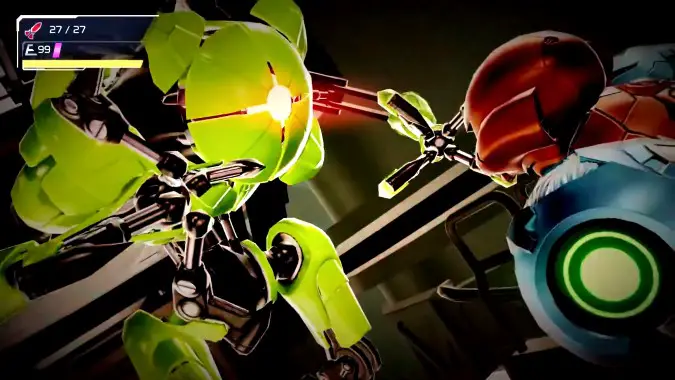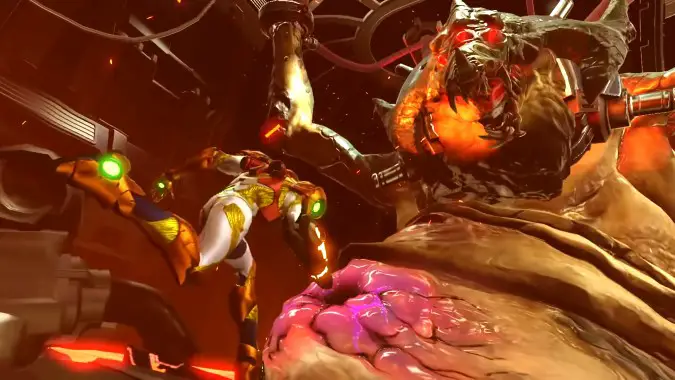Speedruns and sequence breaks: How the developers reward players for breaking the rules in Metroid Dread

What is a “sequence break?” It’s a veritable little pile of secrets that a player may use to do things in ways that they’re not supposed to in a game. Imagine if, when playing World of Warcraft, you managed to access an area that you weren’t supposed to access — say, Old Ironforge or the creepy Forgotten Crypt of Karazhan. Cool, huh? But what if, by accessing those places, the developers actually rewarded you with an achievement, and a cool piece of artwork? Or even better: with some sort of gameplay reward for your efforts, like a cache of gold or a huge chunk of XP?
That is the idea of how sequence breaks work in Metroidvania games in general, including the games that gave this genre its name, Castlevania and Metroid — topical, since the most recent game in the latter series, Metroid Dread, has just been released to truly stellar reviews.
Those games usually feature a set sequence of actions that the player must perform to reach the end: for example, maybe you’ll come across a big red door that you just can’t open. You’ll move on and keep playing the game — until you find some missiles that can open red doors. Now you backtrack to that red door that had been taunting you, and you can finally open it, proceeding into the room behind it — wherein you’ll find some bombs, that you’ll then need to use in order to blow up a floor later on. Rinse, repeat. That’s the intended way to beat the game!
However, the concept of “sequence breaks” also exists in those games. What if, by employing a very precise series of jumps with tight timing, a player were able to jump over a wall and access that room with the bombs, even before acquiring the missiles that open the red doors? They’d then be able to blow up that floor, and access the next area in the game even before they were supposed to! Well, that’s it; the game is broken now, right?
Wrong! These so-called sequence breaks are actually where the real fun begins for a lot of players.

The main idea behind sequence breaking in a Metroidvania is that by opening up certain paths before the intended moment for you to do so, you might save up on a lot of time — important if, say, you’re speedrunning that game. Or you might get some early item that makes a challenging boss suddenly much easier. Or you might just do it for bragging rights, because it’s fun to!
Sequence breaks have existed for a long time in Metroid games — most of them unintended. These tricks have been found by very clever players, and used to offer noticeable advantages to players who want to finish the game fast. Later Metroid games started introducing some “developer intended” sequence breaks: almost like hidden alternative paths to reward skilled players, and those with a knack for exploration or puzzle-solving. Sequence breaks were no longer bugs or accidents, but dividends for player ingenuity, if you will.
Metroid Dread takes these intended sequence breaks to a whole other level. Some of them are teased, and perceptive players might feel intrigued by something that they notice. “Why is this type of block here in this room if there’s no way you could have the power-up that destroys this type of block at this point in the game? Unless… there is a way. I must investigate!”
And once that player successfully finds that sequence break, they might get to kill a boss in a completely alternative (and much cooler) way… and be rewarded even further with an exclusive (and very painful-looking) death animation for that boss!
WARNING: from this point on, there will be possible spoilers for certain elements that happen early on in Metroid Dread.

Are you still with us? Good. Just giving some room between the spoiler warning and the spoilers themselves.
For an example of some of the great sequence breaks players have already found in Metroid Dread, it’s possible for a player to completely skip the first EMMI encounter! This one definitely seems to be an unintended sequence break, as it requires a type of exploit that allows Samus to shoot through walls before she collects an ability to do so.
This video showcases how four precise shots allow you to destroy a blob in the wall that will open a new path, allowing you to bypass that first EMMI completely. If you’re skilled enough and can perform this sequence break quickly, you will save on some precious time:
However, the meat of the matter is what has already become the most famous developer-intended sequence break in Metroid Dread: this video explains how you can manage to get yourself the Bomb upgrade before facing the second boss in the game, Kraid.
If you do so, once you get to the actual Kraid fight, you’ll find that there is a block in his room that can be destroyed by a Bomb — an item you’re not supposed to have yet. Destroying that block reveals the entrance to a hidden morph ball launcher you can use, which is perfectly lined up with… you know what? I’m not going to describe it, you should see it for yourself:
Now that’s a reward for a well-executed sequence break! Look at how nonchalantly she dodges that final belly spike!
There are plenty more sequence breaks in the game, such as the ability to get an early grapple beam, an early space jump, or even an early screw attack! — and knowing how the Metroid speedrunning community operates, it’s possible that even more will emerge in the future. This is a very exciting type of feature, for sure, and I personally can’t wait to try to execute as many of these as possible in a future run of the game.
And it would certainly be fun to see features like that being incorporated in more games out there than simply Metroidvanias! Having the developers reward players for “breaking” the game and finding these unusual side-steps and shortcuts can make for fun gameplay — and it seems like a net positive for gaming in general.
Please consider supporting our Patreon!
Join the Discussion
Blizzard Watch is a safe space for all readers. By leaving comments on this site you agree to follow our commenting and community guidelines.




